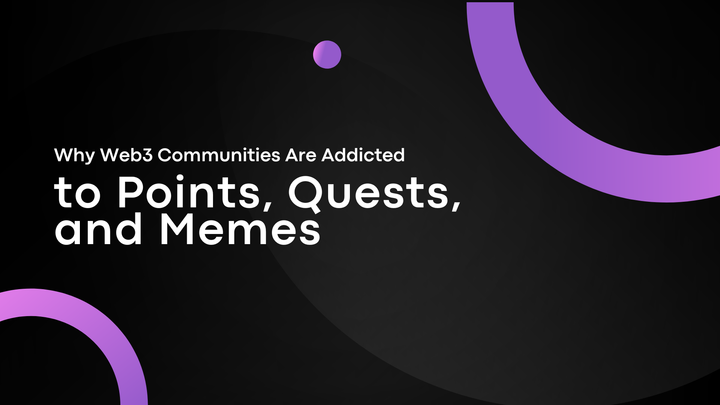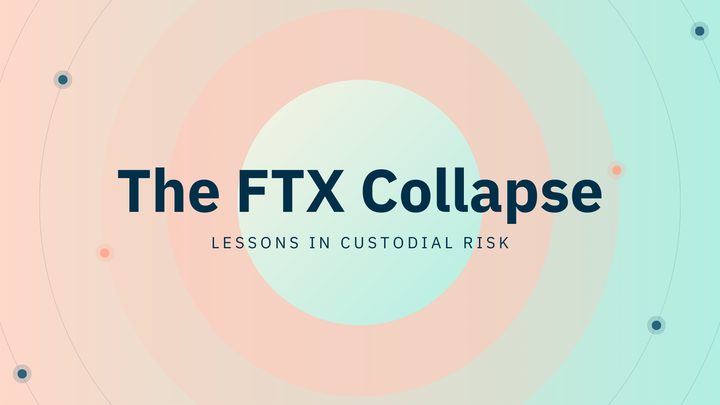Measuring Web3 User Growth: Beyond Wallet Addresses

The Web3 landscape is evolving faster than ever, and with it grows the challenge of understanding who “users” really are. Counting wallet addresses as unique users is a simple starting point, but it falls short of capturing real engagement, retention, and value creation. To build sustainable protocols, communities, and products in a decentralized world, teams must adopt richer metrics that transcend raw address counts.
Why Wallet Addresses Fall Short
- Wallets Aren’t One-to-One with People: A single person can control multiple wallets for different dApps, chains, or strategies. Conversely, custodial platforms like exchanges can represent millions of users behind a handful of addresses.
- Pseudonymity Distorts Engagement Signals: Wallets do not reveal user motivations, intent, or off-chain activity. A wallet that minted an NFT yesterday may never interact again, while another participating in governance forums and chats signals long-term alignment.
- Sybil Attacks Skew Growth Data: Low-cost airdrops and quest rewards encourage users to deploy dozens of “farm” wallets. Counting each as a unique user grossly inflates community size.
- Dormant Wallets Inflate Numbers: Blockchain explorers report over 1.68 billion wallets created globally, but daily active wallets hover around 25 million. Many wallets lie dormant, never generating meaningful activity.
Simply put, wallet addresses are vanity metrics. To understand true Web3 user growth, teams must layer on behavioral, economic, and qualitative indicators.
Defining a “Real” Web3 User
A genuine Web3 user is more than a string of characters on-chain. Consider these dimensions:
- Engagement Depth: Frequency and variety of on-chain interactions, transactions, votes, staking operations, and contract calls.
- Economic Impact: Transaction value, fees paid, total value locked (TVL), and token velocity within a protocol.
- Retention Patterns: Cohort analysis showing how many wallets return for a second, third, or nth session over defined intervals.
- Community Participation: Governance votes cast, proposals sponsored, Discord/Telegram activity, content contributions.
- Cross-Chain Behavior: Use of bridges or multi-chain wallets indicates advanced utility and loyalty beyond a single ecosystem.
By combining these dimensions, teams can filter out noise, farmers, bots, and dormant wallets and focus on users who drive real network effects and sustainable growth.
Core Metrics Beyond Wallet Counts
Web3 teams use a variety of metrics to measure authentic user growth:
Unique Active Wallets (UAW)
- Definition: Wallets performing at least one meaningful action (e.g., transaction, vote, mint) within a time window (daily, weekly, monthly).
- Why It Matters: Filters out dormant addresses. Track 7-day and 30-day active wallet trends to spot growth stalls or acceleration.
Transaction Volume & Value
- Definition: Aggregate number and total value of transactions across a protocol or dApp.
- Why It Matters: Captures economic engagement. High volume with low value may indicate airdrop farming; high value with low volume suggests whale activity.
Session Metrics & Funnel Analysis
- Definition: On-chain funnel: connection → deposit → trade/mint → claim rewards. Off-chain funnel: landing page → wallet connect → conversion.
- Why It Matters: Identifies drop-off points in the user journey. Tools like Formo provide funnel views to pinpoint friction.
Retention & Cohort Analysis
- Definition: Percentage of wallets from a specific signup period that return and perform actions in subsequent periods.
- Why It Matters: Gauges long-term stickiness. Healthy protocols see a stable or gently declining cohort retention, not a steep drop-off after day 1.
Power User & Whale Identification
- Definition: Segment wallets by lifetime transaction volume, TVL, or governance influence.
- Why It Matters: Recognizes high-impact users who can act as validators, ambassadors, or liquidity providers. Cookie3 and 0xrac offer wallet scoring to pinpoint these segments.
Community Engagement Signals
- Definition: Governance participation rate (votes/proposals), referrals completed, quests submitted, and content contributions.
- Why It Matters: Measures community health beyond raw follows. CMO Intern highlights that 50,000 Discord members with a <1% announcement open rate is a red flag.
Offchain Signals & Social Metrics
- Definition: Growth in followers on X, Telegram group activity, substack subscribers, sentiment analysis.
- Why It Matters: Complements on-chain metrics. Community chatter, developer commentary, and social sentiment foreshadow chains of engagement.
Cross-Chain Interactions
- Definition: Wallets bridging assets between chains, interacting with multi-chain dApps.
- Why It Matters: Indicates advanced users and ecosystem stickiness. Rising cross-chain usage shows that users value protocol features over single-chain novelty.
Economic Sustainability Metrics
- Definition: Protocol revenue, token velocity, TVE (Transaction Value Enabled), on-chain revenue-to-cost ratio.
- Why It Matters: Demonstrates that growth is economically viable. Chainlink reports adoption rates could reach one billion users by 2031, but only if protocols focus on sustainable revenue generation.
Qualitative & Behavioral Signals
- Definition: Survey responses, qualitative feedback, support tickets, and developer ecosystem health.
- Why It Matters: Captures user motivations and pain points behind the numbers. Datrics and Marin Software emphasize combining quantitative and qualitative data for holistic insights.
Tools & Platforms Powering Advanced Metrics
- Dune Analytics: Custom SQL queries to track any on-chain event. Ideal for cohort and funnel analysis.
- Formo: Web3-native analytics with funnel views, wallet intelligence, feedback forms, and real-time dashboards.
- 0xrac: Deep insights into wallet activity, token flows, and cross-chain behavior.
- Cookie3: AI-powered wallet scoring based on transaction history and engagement.
- Flipside Crypto: Community-driven data insights, real-time dashboards, and SQL queries.
- Token Terminal: Financial data aggregator focusing on protocol revenues, TVL, and APRs.
- Token Metrics: AI-driven project analysis, risk assessments, and performance benchmarks.
- on-chainCatalog of 81 Web3 data tools spanning indexing, NFT analytics, DeFi APIs, and more.
These platforms enable product, growth, and community teams to slice data by wallet cohort, behavior type, and campaign source, transforming raw on-chain events into actionable growth insights.
Case Study: From Vanity to Valuable Metrics
Take a hypothetical Layer 2 network launching its own wallet:
- Vanity Metric: 100,000 wallet creations in first month.
- Deeper Analysis:
- Only 12,000 wallets deposited any funds.
- Daily Active Wallets stabilized at 8,000 by month’s end.
- 3,500 wallets bridged assets back to Ethereum, indicating cross-chain trust.
- Governance participation reached 400 unique voters (≈5% of active wallets).
- 70% of depositors returned to transact a second time, a robust retention rate.
By focusing on deposits, active usage, cross-chain flows, and governance participation, the team uncovers genuine product, market fit signals and iterates on incentives, onboarding, and UI to further drive engagement.
Framework: Engage → Reward → Retain
- Engage: Acquire wallets through quests, airdrops, campaigns, or partnerships. But measure acquisition cost per active wallet, not per created address.
- Reward: Tie meaningful rewards, token incentives, roles, exclusive NFTs, to high-value on-chain actions: governance votes, referrals, content creation.
- Retain: Build loops that bring users back: ongoing quests, new governance proposals, multi-stage NFT mints, or gamified UX. Track retention cohorts and optimize at each drop-off.
This iterative cycle, backed by data, moves teams beyond transient vanity spikes to real, sustained community growth.
Best Practices for Accurate Growth Measurement
- Deduplicate Sybils: Use on-chain clustering and heuristic analysis to identify multi-wallet users.
- Combine Onchain & Offchain: Link wallet activity to social data and survey feedback.
- Segment Early and Often: Create user personas, first-time minters, power stakers, governance voters, and tailor experiences.
- Automate Retention Alerts: Set alerts for cohort dips or funnel blockages.
- Invest in Qualitative Research: Run periodic surveys and user interviews to contextualize metrics.
Conclusion
Wallet addresses remain a useful proxy for on-chain activity, but they are only the tip of the iceberg when measuring true Web3 user growth. To navigate the complexities of decentralized ecosystems, teams must adopt advanced metrics, transaction value, retention cohorts, governance participation, cross-chain behavior, and qualitative signals. Leveraging powerful analytics tools like Dune, Formo, and Token Terminal, teams can uncover the stories behind the numbers and iterate on Engage–Reward–Retain loops that foster real user loyalty. In doing so, protocols will not only count wallet addresses but cultivate thriving, sustainable Web3 communities.
References
- https://blog.chain.link/web3-metrics
- https://formo.so/blog/top-5-web3-growth-analytics-tools-to-unlock-marketing-insights
- https://www.cmointern.com/2025/05/how-to-measure-real-community-growth-in.html
- https://www.marinsoftware.com/blog/beyond-clicks-and-views-how-to-measure-engagement-in-the-web3-era
- https://www.alchemy.com/dapps/best/web3-data-tools
- https://www.tokenmetrics.com/blog/measuring-success-web3-projects
- https://www.startus-insights.com/innovators-guide/web3-industry-report
MITOSIS official links:
GLOSSARY
Mitosis University
WEBSITE
X (Formerly Twitter)
DISCORD
DOCS



Comments ()